By Federico Petroni / the Italian original is published in magazine Limes
American dormancy has triggered a race for the South Pole between the Chinese, Russians, and even the Turks. Beijing hopes to use the area to become a maritime power, while the British and Australians hope to redraw the map in their favor. The battle to renew the Antarctic treaty is already being fought.
1. The race for Antarctica has started. It will not resolve itself in a hundred meters, this is a marathon.
Observing the last five years, large and medium powers have exponentially increased their presence in Antarctica. China is the largest investor in scientific research, building its fifth research station and completing the first permanent airstrip on the continent. Russia meanwhile plans to reopen an abandoned base in a very sensitive territory and expand the one erected at the South Meteorological Pole. Even the dormant United States has announced the purchase of new icebreakers “to protect our national interests in the Arctic and Antarctic” [1]. Australia aims to access ice all year round, acquiring the only runway that allows landing even in winter. The UK and Brazil expand or double their bases on the Antarctic Peninsula, around which fishing has skyrocketed. Polar expeditions even arrive from Turkey, which is now elbowing the others for its own slice of the cake. The coronavirus pandemic has generally slowed down all activities, but Chinese and Russian ones less than the others.
The surge is so clear and so explicit are the ulterior motives that environmental conservationists even include scientific research among the threats to the white sanctuary, as well as more predictable challenges of climate change, uncontrolled fishing and tourism (50,000 people each year) [2].
Nervousness is also growing among the countries involved. It is not uncommon for the Chinese and the Anglo-Saxons to exchange epithets. The former are accused of taking advantage of the epidemic to cloak their activities in secrecy, to reject inspections, to not have foreign personnel with them using the excuse of preventing infections [3]. Or they are accused of endangering fragile marine ecosystems by plundering fishing resources. The latter, on the other hand, are accused of repressing the legitimate ambitions of the People’s Republic, preventing it from participating in the definition of the rules or teasing its operations.
Most of the time the allegations turn out to be inflated, albeit not unfounded. But the tones reveal an evident ferment. Unrest is spreading about how to manage this new interest in Antarctica. The focus is on the renewal of the Antarctic treaty, expiring in 2048. This may seem like an eternity, but as is always the case in international law, the agreement is valid as long as it reflects reality. It limits itself to translating on paper the intentions and the balance of power of 1959, which was signed by 12 nations and with Americans and Soviets avoiding conflict even at lower latitudes.
Sixty years later and with members rising to 54, we are still not at the breaking point, but the major powers are positioning their pawns to rewrite the rules. They are gearing up to secure a seat at the table when the courses are portioned. And, as is inevitable, the rivalries that divide them in the rest of the globe are extending to Antarctica.
2. What happens in Antarctica does not stay in Antarctica: true from the point of view of climate, but not geopolitics.
The frozen continent has an undeniable centrality in the World Ocean. If you look at the Earth with the South Pole at the center, you can appreciate how the seven seas are really only one. At these latitudes the three oceans merge like nowhere else. They give life to the thermohaline circulation, the great conveyor belt of currents that influences, if not actually determines, the earth’s climate.
Being present at these latitudes is essential to understanding how the skin of the planet changes. The Antarctic warms three times faster than the rest of the globe, of which it holds 90% of the ice. Scientists are fighting over how much melting Antarctic ice sheets will raise sea levels by the end of the century: half a meter or ten? Scientists are hard at work trying to figure out how warmer waters will split glaciers and accelerate that rise. If to become great a nation must learn to look at the land from the sea, the sea must also be looked at from Antarctica, although obviously it is not sufficient to confer the maritime mentality that characterizes the world’s major powers.
However, the geographical-climatic centrality does not correspond to a strategic one. The destinies of the world are in another hemisphere: the northern one. The crucial sea routes for thalassocracy are very far away, between the equator and the 50th parallel north. Anyone who installs intercontinental armaments there would find it hard to threaten the United States. Whoever transferred exceptional naval vehicles there could at best tickle the American continent from the south. If China were to do so it could squeeze Australia in a pincer. In short, it does not offer decisive advantages to a competitor from Washington. Nor is it of any use to the strategy of the latter, which is enough to tighten the noose around rivals, all deeply terrestrial, potentially besieged in domestic waters. Whoever ruled the Antarctic could not even be crowned king of the local fauna: even the emperor penguins would rise up.
This distance from the strategic destinies of the world are reflected in history and even in the name of the continent. It remained terra incognita until 1820, until no later than seventy years ago it was completely excluded from competition between powers. It is called anti-Arctic (from the Greek arktos, from the Big Dipper at the top of which is the North Star), due to pure geometric translation with respect to the North Pole.
Read through a geopolitical lens, the climatological adage is reversed. What happens outside Antarctica ends up touching Antarctica as well. The major powers are dedicated to it not because of revolutionary events at the South Pole, nor because technological development has opened up previously remote possibilities. Climate change has not freed portions of land from the ice that would arouse new appetites. The cost of extracting resources remains prohibitive, and there is no consensus on where, what and how many these underground riches are.
In short, it is not the climate of the Antarctic that has changed, but the climate around the Antarctic. Its remoteness makes it attractive for revisionist nations (China above all, followed by Russia and Turkey) to test their ambitions where America does not look, to prove that they are finally world powers. Deeply maritime countries such as Japan and South Korea settle there to understand how the ocean behaves on which the survival of both depends. All this obviously feeds the anxieties of those who claim more than half of the continent, that is the Anglo-Saxon block United Kingdom-New Zealand-Australia. Reigniting the competition.
3. There is nothing less geopolitical than using an international treaty to read the balance of power in a given theater. Yet this is what is commonly done in Antarctica. It is called a land of peace and science, well regulated by the Antarctic Treaty, whose rules would generally be respected and the codes of conduct introduced: a model to export. Like any legalistic reading, it is profoundly unsuitable for power competitions.
The 1959 treaty simply sanctioned a truce. After the Second World War, a veritable jumble of polar expeditions from the nations that claimed a slice of Antarctica was triggered. Even the United States, while not claiming any piece of ice, had signed up. In 1947, Admiral Richard Byrd led 4,700 men, 13 ships and 23 aircraft as part of Operation High Jump, the first fully military Antarctic mission, with the aim of mapping the continent by photographing it from above.
With the Soviet landing in 1956, an alarm bell rang in Washington. Thus, taking advantage of the close cooperation between the scientific delegations sent to the South Pole for the international geophysical year of 1957-58, the Eisenhower administration proposed the pact that would come into force in 1961 [4].
In it, the Americans and the Soviets agreed not to use the White Continent for military purposes, nor to test nuclear weapons there and to freeze territorial claims. The other ten contracting parties were happy to adhere to it because this last purpose saved them from fighting over plots of land that they would not have had the strength to defend. By suspending them, these claims were finally put on paper, and therefore in some way legitimized.
The Antarctic Treaty does not exclude geopolitical competition, it does not annul the projection of the influence of States. It circumscribes it. It therefore continues, not even subtly, through five vectors.
First, the claims of Argentina, Australia, Chile, France, Norway, New Zealand and the United Kingdom. They confer a certain status and in their respective territories the states if they do not behave like sovereigns, assign themselves special responsibilities. For example, in search and rescue or offering services to foreigners in “their” pieces of land. Australia has made Hobart in Tasmania the crossroads for access to the eastern half of the continent, granted friendly nations the use of its military aircrafts and even transported several Chinese scientists there. The chancelleries of these countries say without hesitation that if the Antarctic treaty ever collapsed they would be ready to revive the claims. It is to be believed: in order to consolidate their claims, in the seventies and eighties Argentina and Chile came to give birth to a dozen scarce children in the ice – the first and the most southern was Emilio Marcos Palma (January 7, 1978), whose mother Silvia, seven months pregnant, was transported by military flight to the base of Esperanza, then commanded by her husband, Captain Jorge Palma.
The British are meticulously keeping the sentiment alive: the administration of the British Antarctic Territory launched a competition for children aged 4 to 17 to design stamps celebrating the “discovery of the Antarctic.” Among the four winners, approved by Her Majesty Queen Elizabeth, was the splendid drawing by Samaira Hasan, 14 years old from Bishop’s Stortford, which depicts the Discovery expedition of Scott, Wilson and Shackleton in 1901-04. There was excluded we imagine only because it is too similar to other examples, the pastel of an anonymous little patriot with a penguin next to the Union Jack and the proud writing “Protect our Antarctica” – whether that “our” refers to the United Kingdom or to the whole of humanity is a doubt that we leave to reader [5].
The second field is scientific research. In terra incognita and terra nullius, science is always a surrogate for state power. In the Antarctic, it is the currency with which legitimacy is valued. It is used to enter the white continent, to gain credibility and to gain decision-making power. It is a mechanism expressly provided for in the Antarctic Treaty. Its members evaluate the scientific contribution of newcomers and give them authority. Then, of course, since those who write the rules are the same ones who apply them, there is an inevitable discrimination, for example against China, whose activities arouse more suspicion than those of Bulgaria.
Science legitimizes presence. If you show that you are fighting to understand and anticipate climate change, you gain international prestige – or at least you dodge some criticism. If you settle in a territory, study it, accumulate data and knowledge, you become familiar with it. The Antarctic is still largely unknown: a relatively accurate mapping of the continent was lacking until 1983, and humans have yet to set foot on 32% of its surface [6]. Those who have been patrolling the continent for the longest time are obliged to be a point of reference for those who come later. This is, for example, what the Americans and the British are doing with the five-year project to study the Thwaites glacier, crucially located in the only portion not claimed by anyone. It is one of the most heavily funded programs in Antarctica’s short history ($25 million) and is designed to understand how quickly this enormous mass, the size of Great Britain, is sliding toward the sea. Not a school hypothesis, it has already detached a piece of surface area equal to Liguria. According to the most catastrophic estimates, Thwaites alone could raise sea levels by 65 centimeters by 2100 [7].
Often, then, research activities are divided along national lines. As in the ambitious projects to drill into the ice sheet to understand what the climate was like a million and a half years ago. There are seven different expeditions: one American, one Chinese, one Japanese, one Korean, one Russian, one Australian and one European (Beyond Epica, led by Italy [8]). They exchange data and analyses, but each aims to be the first to reach the coveted goal. The fact that scientists cooperate with each other does not rule out competitive dynamics.
The third vector is science stations, of which there is no official list. The Antarctic Treaty database lists ninety operational and temporarily closed stations, but it is incomplete. About thirty countries have an Antarctic pied-à-terre. It is curious to observe the disposition of the stations, which seems to reflect the world hierarchies. At the South Pole, the center of all the world’s meridians, stands the U.S.S. Scott-Amundsen, with an exquisitely imperial name because it is named after the two explorers who were the first to arrive there in 1911, whose nationalities (English and Norwegian) are firmly in the American sphere of influence. The second lowest latitude belongs to the United States’ number one rival, China: in Kunlun it maintains a summer base only, which it proudly describes as the highest in Antarctica (4,083 meters above sea level). The third is the Russian Vostok, which coincides with the meteorological South Pole, the lowest temperature ever recorded on Earth, -89,2°C. The fourth would be the Japanese Dome Fuji, however temporarily inactive.
Keeping a station operational in Antarctica all year round requires an immense effort. When the summer season closes and polar night falls on the white sanctuary, those who remain in the stations are completely isolated from the world for six months. No one can come to help them. One can count on the fingers of one hand the number of emergency flights in history that have managed to land in winter in the Antarctic. Astronauts in the orbiting station are closer to civilization than researchers at the South Pole. Leaving personnel in the ice continues to be seen as a feat. It can’t be done just for the sake of science. Not least because 90% of the costs of Antarctic missions go to infrastructure. “Too few nations are equipping themselves with the intellectual capacity proportional to the infrastructure they accumulate. They should be looking to share research resources and coordinate efforts,” blatantly declares Steven Chown, head of the Scientific Committee on Antarctic Research (SCAR) [9].
The bases then are continuously served by the military. The Armed Forces accompany and allow research missions with Navy ships, Air Force aircrafts, Special Forces raiders, Army mountain guides. In this way, countries conduct undeclared exercises, test how to operate in extreme environments, equip themselves with the capabilities to project force a hemisphere away, and accumulate logistical skills potentially needed for military operations.
The Fourth vector is toponymic. Paraphrasing scholastic philosophers, place names are a consequence of power relations. Those who name a place claim some special authorship or affinity. The SCAR Register, compiled by Italian researchers Roberto Cervellati and Chiara Ramorino, lists 38,842 place names for 19,963 census places. On average, each place has two different names: Borodino Island for the Russians is Smith Island for the British. Ask the Arabs and Iranians what they call the Gulf that divides them, or the Japanese and Koreans the sea that separates them: diatribes over names reveal deeper disputes. Disputes also occur between allies: in Oslo they say that the Americans question the Norwegian claim by using German place names. Toponymics is clearly dominated by the Anglo-Saxons, who are imposing their own cartography. Putin has publicly complained about this: “Russian names given in the past by our researchers and travelers are gradually disappearing from world maps, thus erasing the memory of Russia’s contribution to the study of the planet and the development of science” [10]. The Chinese are beginning to ascribe their own names to the lands they tread. After all, toponymics is a relatively convenient way to plead sovereignty, as the British do when they churn out new names at a steady pace: on December 3 alone, they published 28 new names for the Antarctic Peninsula [11].
The Fifth and last vector is the exploitation of resources. For now, the subject of heated disputes is only fishing, particularly krill fishing, which is concentrated around the Antarctic Peninsula. In 2019, Chinese, Norwegians, Ukrainians and South Koreans caught 390,000 tons of them: for comparison, this is equivalent to the tuna taken by EU countries every year. This small relative of the shrimp is increasingly essential in the diets of the developed world for the production of protein supplements, widespread in China due to the swine fever that has decimated pork production. At stake is the creation of three new marine protected areas on the Antarctic Peninsula, in the Weddell Sea and off the East Coast, in addition to the two established in 2009 in the South Orkney and in 2017 in the Ross Sea. Russia, China and Norway are using the veto, arguing that the environmental arguments advanced by other diplomacies are actually intended to hinder the projection of their strategic interests. This is exactly how it is: yesterday, whales were used to claim territories, today you can do the same with krill.
In perspective, mineral resources and hydrocarbons could also enter the equation. The Madrid Protocol of 1998 prohibits their extraction, but the fact that this is the last agreement reached in the past thirty years says a lot about how much Antarctic diplomacy has stalled. On the other hand, the numerous geological researches also serve to accumulate knowledge about the coffers. The riches will not spark wars, but they give a good incentive to change the rules. Finally, water: it is estimated that ice contains 70% of the planet’s freshwater reserves. During the extreme drought in Cape Town, South Africa proposed melting an iceberg. And what if India, with its billion and a half people and chronic water crisis, in a few years would consider it necessary to do the same?
4. The movements of China, Russia and Turkey clearly show what the current strategic value of the white continent is.
The Antarctic is one of the very few theaters in which Beijing is allowed to test its claims as a great world power. Unable to challenge the United States in the Indo-Pacific, it launches into the rest of the planet to rewrite the rules by which the world works (or thinks it works). Its leadership is also aware that competing with Washington requires learning to be at sea. And the poles, both North and South, as relatively free of American pressure, are building blocks for acquiring these skills. Xi Jinping made this clear in Hobart in 2014: “Becoming a polar power is important (…) to becoming a great maritime power. “[12]
Also informing China’s polar drive is a desire to redeem the so-called century of humiliation. While the European powers went around planting flags on unknown lands (including the poles), the Chinese had to defend themselves at home and suffered the conquest of Westerners. Antarctic expeditions sparked popular enthusiasm, as if it was finally the Celestial Empire’s turn to explore the globe. Each mission of the research ships Xuelong and Xuelong 2 is greeted with fervor. It is precisely the second icebreaker that is at the heart of the polar program included in the 13th Five-Year Plan: from its activities branch off the construction of the fifth Antarctic base on Inexpressible Island and the testing of the fixed-wing polar aircraft Snow Eagle. Logistics is superior to the realization of the station: it is the confirmation that Beijing needs the white continent to help it build a world naval network. It serves to learn how to project itself in the distant seas, an obvious strategic substrate of the new silk routes. Finally, as shown by krill fishing, there is the desperate search for basic resources (drinking water, proteins) of which Chinese territory is increasingly scarce due to pollution or pandemics.
This is the context that informs the three principles for Antarctica enunciated by Xi again in Hobart: understand, protect, use. Beijing has a very Chinese idea of protecting. Since 2013, it has been proposing to create a special management area (ASMA, in jargon) of 19,000 square kilometers (the area of Veneto) northeast of Kunlun Station. There are other causes of ASMA, for example, the United States have established it to prevent flights in the side of the Scott-Amundsen base from which pulls the wind, because they would disturb the surveys. No one gave the Chinese any slack, however.
In 2017, they resubmitted the same ideas for the same area in the form of a code of conduct for research and exploration. Sky-opening for other countries, particularly the Anglo-Saxon bloc, thought it was a way to limit others’ activities and control territory. So in the Antarctic summer of 2018-19, the Americans began to approach, erecting a temporary camp 100 kilometers from Kunlun, around the corner by polar standards. The Chinese got very irritated: “It’s a battle of political will, of military power, of global influence. And it has heated up considerably in recent months,” an anonymous government researcher vented to the sensationalist South China Morning Post [13].
Looking at Russia, it is palpable how far behind it feels. It comes from years in which it has allocated derisory funds to research. Its infrastructure is falling apart: explorer and hero of the Soviet Union Artur Chilingarov visited it recently and admitted the pitiless comparison with those of other nations. Its logistical capabilities are embarrassing: in October the ship Sevmorput’ (32 years in service) carrying materials to expand the Vostok station got stuck off Angola and was forced to return home. Moscow feels it is an unjustly marginalized pioneer: in the Kremlin, they openly state that the Antarctic treaty does not treat it fairly and denounce “disparities in national procedures governing permitted activities”.[14] One example: the Chinese who did not wait for the environmental impact assessment to start building the fifth station.
Russia is trying to reverse course. It is expanding Vostok to keep it open year-round – the money comes out of its own pocket from the country’s richest man, Leonid Mikhel’son. He intends to reopen the decommissioned Soviet station of Russkaya, significantly located in the segment of Antarctic that no one claims (yet), where he would like to place a component of the Glonass satellite system. It attacks attempts to limit fishing and makes explicit that it wants to exploit mineral resources one day. It is even rumored that they will erect at the base of Novolazarevskaya the second Orthodox church on the continent after the one next to the Bellingshausen station on King George Island (Vaterloo Ostrov, pardon). This desire to catch up is a reflection of the more general complex of marginalization of Russians and the desperate search for resources to keep the state machine oiled. Therefore, it will be difficult to transfer the tactical understanding with China to these latitudes. Moscow describes its activities as one of the reasons why it is urgent to return south. The distance of the Antarctic from the other world games will allow some leeway. But it is impossible to think of exploiting polar cracks to generate a distance between Russia and China, as divergent interests in the Arctic are insufficient to separate the odd couple [15].
Turkey is the latest arrival, with its first expedition being led in 2016. Despite a glaring delay and despite only opening a shack on Horseshoe Island in 2020, it shows how much the Antarctic continues to excite ambitious nations. Its leadership is explicit. “Our ultimate goal is not to be an observer in the Antarctic agreements, but to become one of the countries that has a say in the future of the continent,” Recep Tayyip Erdoğan declared in December 2019. In 2018, one of his ministers observed, “The continent is rich in energy resources. And it provides 70 percent of the world’s resources. We will have a say in all these resources in the future. “[16] The estimate is crude. The intent, however, is quite clear. If, as the Turkish president himself says, Ankara wants to become a world reference point for science, it must be in Antarctica. If then, by going there, it will test the logistic competences that it still lacks and that it would need to connect the various outposts that its troops are conquering between the Mediterranean and the Red Sea, all the better.
5. Antarctica is coveted because it is land. This very simple fact makes it immediately more available than the sea, more desirable than the Arctic. It is easier to share islands and mountains, even if they are frozen, than waves. However, the ferment that is maturing around the South Pole will not necessarily bring the Antarctic treaty to collapse. It could be rewritten before 2048 to adjust it to the unprecedented crowding. It could be hollowed out from within, with some countries undertaking new activities (military, mining) while preserving an aura of opportunistic ambiguity.
After all, if Beijing’s goal is to gain acceptance, it is in its and other revisionists’ interest to continue to proffer adherence to the rules. Much will depend on how intense the American siege becomes. A defensive China may be forced to divert resources elsewhere.
Compared to the Arctic, the Antarctic has the advantage of not being the theater of competition between great powers. The North Pole has re-entered history because it separates the two decisive continental masses of the planet, therefore because America is forced to defend itself also from the North, now that the unpaid sentinels of the polar ice are melting. None of this is happening at the South Pole. Rivalry currents lap the ice cap, but the United States is in a conservative position. Of the two, they consider the Arctic a priority. They’ll go back to paying attention to what’s happening in Antarctica, send the occasional Coast Guard icebreaker, exercise some military capability, reinstate inspections of others’ bases (they haven’t done any for eight years). However, they will rely mostly on propaganda to paint Russian-Chinese yearnings as detrimental to the health of the planet. And to allies, since all members of the Anglosphere, Canada excluded, boast an extensive presence on the white continent. The lesser strategic interest of the United States could authorize a moderate division of Antarctic lands and resources. Being far from history and its violence is a luxury. It can also be a curse.
________________________________________
Notes:
1. “Memorandum on Safeguarding U.S. National Interests in the Arctic and Antarctic Regions,” White House, 9/6/2020.
2. C.J. Hogg, “Protect the Antarctic Peninsula – before it’s too late,” Nature, vol. 586, pp. 496-499.
3. C. Hoare, “China ‘weaponising’ pandemic for covert Antarctic mission sparking ‘real concerns'”, Daily Express, 22/8/2020.
4. D. Olson Belanger, Deep Freeze: The United States, the International Geophysical Year, and the Origins of Antarctica’s Age of Science, Boulder CO 2006, University Press of Colorado.
5. “Stamp Competition: Meet the Winners!”, Government of the British Antartctic Territory, 21/8/2020, bit.ly/3aacoJp; “Stamp Competition: Meet the Judges”, Government of the British Antartctic Territory, 30/6/2020, bit.ly/37k59wR
6. R.I. Leihy et al, “Antarctica’s wilderness fails to capture continent’s biodiversity,” Nature, vol. 583, pp. 567-582.
7. See thwaitesglacier.org.
8. See www.beyondepica.eu/en
9. S.L. Chown, “Polar collaborations are key to successful policies,” Nature, vol. 558, pp. 163-165.
10. “Putin poručil sozdat’ Atlas mira, ne iskažajuščij “geografičeskuju pravdu”” (“Putin ordered the creation of an Atlas of the world that does not distort ‘geographical reality'”), Tass, 27/9/2018.
11. “2020 Antarctic Place-Names mark 200th Anniversary of the Discovery of Antarctica,” Government of the British Antarctic Territory, 3/12/2020.
12. Cited in A.M. Brady, China As a Polar Great Power, Cambridge 2017, Cambridge University Press, p. 15.
13. S. Chen, “Are China and the US jostling for position at the highest point in Antarctica?”, South China Morning Post, 4/29/2019.
14. See “The Antarctic Treaty in the Changing World,” paper presented by the Russian Federation at the XLII Antarctic Treaty Consultative Meeting, Prague, 17/5/2019, p. 4.
15. F. Petroni “The Frozen Heart of the Sino-Russian Axis in the Arctic,” in China-Russia, the Odd Couple, Limes 11/2019, pp. 201-212.
16. Both quotes from D. Depledge et al, “Turkey: A New Polar Power?”, Rusi Newsbrief, Royal United Services Institute, 9/4/2020.








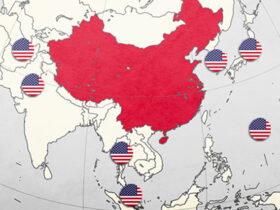
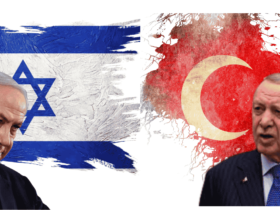
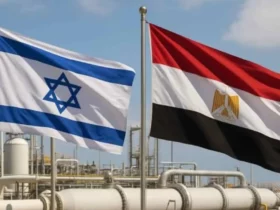

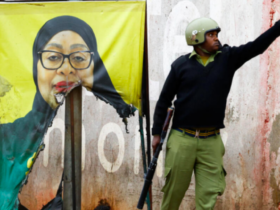

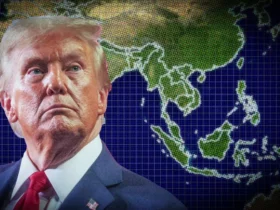


Leave a Reply